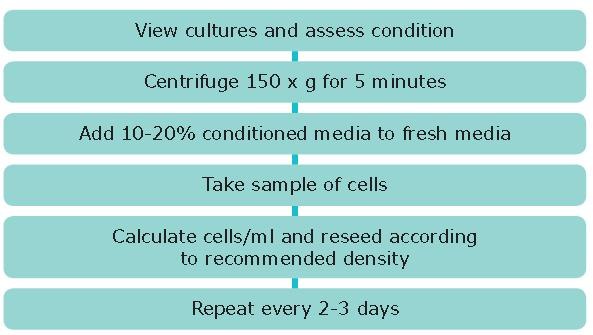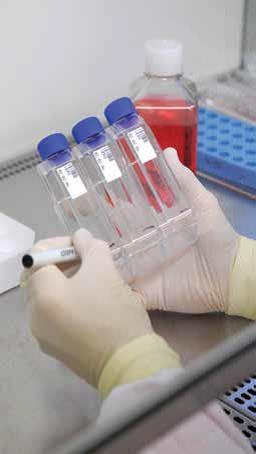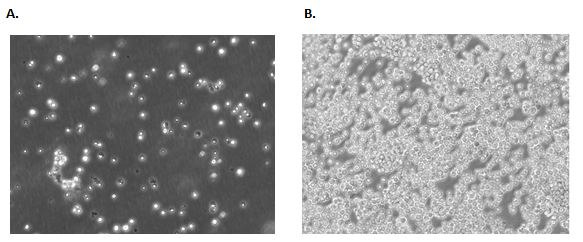Cell Culture Protocol 5: Subculture of Suspension Cell Lines
ECACC Laboratory Handbook 4th Edition

Aim
In general terms, cell lines derived from blood (e.g. lymphocytes) grow in suspension cultures. Cells may grow as single cells or in clumps (e.g. EBV transformed lymphoblastic cell lines). For these types of cell lines subculture by dilution is relatively easy. However, for cell lines that grow in clumps it may be necessary to bring the cells into a single cell suspension by centrifugation and re-suspension by pipetting in a smaller volume before counting.
Materials
- Cell Culture Media: pre-warmed to the appropriate temperature (refer to the ECACC cell line data sheet for the correct medium and temperature)
- 70% (v/v) alcohol in sterile water (793213)
- Trypan Blue Solution (T8154)
Equipment
- Personal protective equipment (sterile gloves, laboratory coat, safety visor)
- Waterbath set to appropriate temperature
- Microbiological safety cabinet at appropriate containment level
- Incubator
- Pre-labelled flasks
- Inverted phase contrast microscope
- Centrifuge
- Hemocytometer or automated cell counter like a Scepter™ Cell Counter
- Marker Pen
- Pipettes
- Ampoule rack
- Tissue
Procedure

- View cultures using an inverted phase contrast microscope. Cells growing in exponential growth phase should be bright, round and refractile. Hybridomas may be very sticky and require a gentle knock to the flask to detach the cells. EBV transformed cells can grow in very large clumps that are very difficult to count and the center of the large clumps may be non-viable.
- Take a small sample (100-200μL) of the cells from the cell suspension and count the cells. Calculate cells/mL and re-seed the desired number of cells into freshly prepared flasks, without centrifugation, just by diluting the cells. Refer to the data sheet supplied with the cell line for the recommended seeding density.
- Repeat this every 2-3 days.
Key Points
- If the cell line is a hybridoma or another cell line that produces a substance (e.g. recombinant protein or growth factor) of interest retain the spent media for analysis.
- Should the cells need to be concentrated, centrifuge at 150 x g for 5 min and resuspend in suitable volume and transfer to culture vessel.

Figure 1.Examples of a suspension cell line. Jurkat E6.1 cells 24 hours (A) and 72 hours (B) post freeze/thaw show typical suspension lymphoblastic morphology. Confluence should carefully be monitored and passaged when cells reach ~80% confluency.
To continue reading please sign in or create an account.
Don't Have An Account?